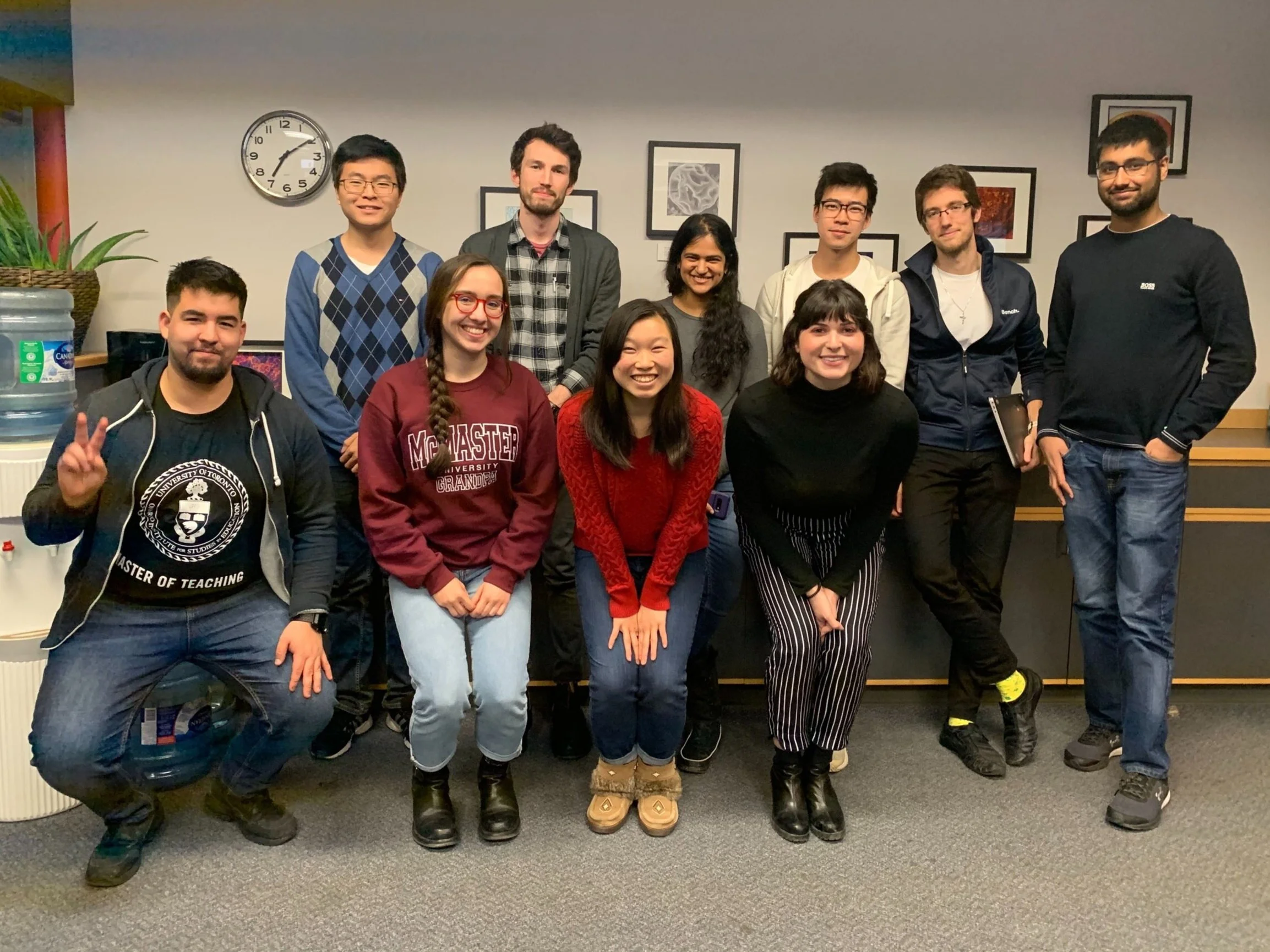SynBio Canada’s Response to the Pan-Canadian Genomics Strategy Survey
SynBio Canada is a national not-for-profit with the goal to create, strengthen, and advocate for a coordinated community of enthusiasts, trainees, and researchers passionate about synthetic biology.
The field of synthetic biology is the application of engineering principles to genomics and molecular biology, to create solutions spanning medicine, agriculture, and industry.
Our vision is to ensure Canada’s leadership in the field of synthetic biology through the development and retention of expertise across the country.
The following is SynBio Canada’s response to the Pan-Canadian Genomics Strategy (PCGS) survey, launched by Innovation, Science and Economic Development (ISED) Canada. Select responses to specific questions from the survey are presented here. We thank ISED for the opportunity to engage, and we look forward to the release of the full PCGS.
From your perspective, please describe the critical opportunities, gaps and challenges within Canada’s genomics landscape related to adoption and commercialization?
Opportunities:
Canada has the potential to transform its economy into a bioeconomy. Within the sectors of health, agriculture, and industry, solutions provided by synthetic biology can have a massive economic impact. Synthetic biology solutions can help to meet Canada's commitments to the UN Sustainable Development Goals (SDGs). This the case for every country in the world, but Canada has some unique opportunities:
- Canada is already a powerhouse in agriculture and therefore has the opportunity to become the world leader in agri-food biotech innovation & commercialization.
- Canada has a good foundation for attracting highly qualified personnel (HQP) as it has a high quality of living, recognized all around the world. It is especially attractive for HQP in the biotech area, as the commercialisation of biotech is far easier than within the European Union.
Demand in commercial lab space should be attractive for commercial real estate investors and the industry is beginning to take notice of. For example CBRE Life Sciences, Lab Occupier, and MIP Labs, which are each Canadian solutions to providing this desperately needed lab space. This engagement between the genomics ecosystem and the real estate industry will accelerate investment in developing more lab space. This can further increase the attractiveness for start-ups and foreign HQP.
Gaps:
There are several issues that, in our opinion, have been addressed by other countries in a better or more concerted way:
- There is no dedicated funding specific to synthetic biology/engineering biology in Canada, especially for training and to support commercialization. Other countries go farther than this and have whole national strategies for synthetic biology.
- There is a lack of public & government awareness of the opportunities presented by synthetic biology, particularly outside of health & medicine. Recent investments in biomanufacturing are centered on medical applications, which ignores the potential for agriculture and industrial applications.
- Canada is very good at funding scientific infrastructure/equipment for academic purposes. However, there is a scarcity of affordable & equipped commercial lab space, especially for pre-seed & seed startups. Furthermore, there is a lack of support and training for the people who will use the equipment for industrial purposes.
- The private sector is too often seen as merely a source of funding. It may be easy for large corporations to match government funds for R&D to be done by academics, but startups, who are the most innovative and fastest-moving players in biotech commercialization, need non-repayable, non-dilutive, non-match-requiring funds if we want them to stay in Canada and succeed in commercializing their high-impact technology
- Graduate students in the Life Sciences are often not taught whether and how to commercialize their ideas at the beginning of their career. This is often an afterthought, but instead they should be trained and encouraged early on to foster the development of necessary skills and steer research projects towards the generation of commercializable products.
- There is a lack of support outside mainstream academic innovation & commercialization cycles. Times are changing and academia is no longer the only source of new biotech start-ups. We need to modernize our commercialization support infrastructure to help non-academic innovators, with a focus on students, entrepreneurial drop-outs, and recent grads
Challenges:
- The public knowledge of genomics is limited, leading to misconceptions and worries about its use. This is especially the case for everything labeled as Genetically Modified Organisms (GMOs). Such misconceptions will prevent the success of biotechnological solutions that are safer, more efficient and more sustainable than current applications.
- Academia is still inert towards promoting entrepreneurship. University tech transfer offices are generally very slow to respond and, together with the equity taken by universities, this frustrates entrepreneurs and makes investors hesitant. The cultural differences between the worlds of academia and entrepreneurship create tension that prevent commercialization. Whilst lip service is often paid, graduate students who pursue entrepreneurship commonly face great resistance from their academic peers & supervisors instead of support & encouragement. Even though most graduate students do not stay in academia, their training, CV and success matrices are defined by professors and departments, which have no incentives to promote non-academic skills and training. Quite the contrary, participation in non-scientific events and workshops is seen as time that the student should spend on doing academic work. Students should get more training about IP and how tech transfer at universities works. Additionally, a bigger focus on industry, entrepreneurship and applications during their graduate career
- The life sciences community is often siloed into either industry or academic associations/events, making it difficult for students to get exposed to industry and to develop their entrepreneurial skills and spirit. Furthermore, the laboratory space is limited and expensive, making it difficult to commercialize ideas and expand them beyond academia. WIthin academia, students are siloed into different faculties with very minimal inter-faculty and interdisciplinary opportunities meaning that students in the sciences are not exposed to ideas such as design thinking from the engineering faculty or business planning from the Business Faculties. This means that students do not have the cross-disciplinary skills they need to successfully create their own biotech start-up.
- The Venture Capital (VC) community in Canada is risk averse, in particular regarding life sciences. Non-dilutive government funding could help to de-risk early-stage biotechnology to make it more attractive to Canada’s risk-averse investor community.In this regard, the restrictions of funding organizations like Genome Canada from directly supporting for-profit corporations is counterproductive to their goals of accelerating genomics commercialization.
- Canada's science policies are often created on the “follow-the-leader” principle, with the US (and sometimes the UK) as examples. As a result, Canada's public and private genomics funding is always 5 years behind, and an order of magnitude too small. We need transformative, visionary funding for talent and ideas.
How can these opportunities, gaps and challenges be addressed? This could include through the PCGS or other mechanisms.
- All aspects can be addressed by funding public communication initiatives to clearly communicate the benefits of genomics technologies. Framing investments into biotechnology and synthetic biology as investments in sustainability can overcome the perceived dichotomy between biotechnology on one side and “natural”, “green”, and “organic” solutions on the other. We can replace or enhance the production of most chemicals, foods, medicines via biotechnology, while making their production more sustainable.
- Dedicated funding of at least an additional $50M/year to synthetic biology/engineering biology fundamental research. This is comparable to investments made by the US, UK, and Australia (relative to GDP), which would mean Canada is at least on par. A more significant investment ($100M/year) would mean Canada could win the competition for global HQP. Such funding should include a public investment program similar to the US SBIR program, that provides non-dilutive funding to commercialize transformative genomics technologies, on the order of $200K - $2M per company.
- A national training program for recruiting graduate students and postdocs, including training on how to commercialize their research and/or start a company. This has been implemented in Australia, which led to a self-sustaining community and further company creations and investment downstream. The programs should focus on biotech entrepreneurship among students instead of reinforcing the traditional profile of tenured research professor spinning out or licensing their academic research. Such a training program should be paired with guidelines for universities on how to commercialize biotechnology, with standard procedures and defined amounts of equity that a university is allowed to take. Of further help would be the creation of a handbook about IP, tech transfer, sources of public funding and programs for commercialization in Canada. All this should be determined by external experts and not only the university administration itself.
- A recognition that opportunities in life science extend far beyond human health and that in fact many of the easier & higher-impact innovations are in food, agriculture, materials, industrial chemicals, computing/IT, and other non-biomedical applications. In particular, the Canadian biomanufacturing strategy must be expanded beyond medical applications. There is a massive opportunity for food and chemical production using engineered microbes and such products can reach the market faster. A massive investment in biomanufacturing infrastructure that is not exclusive to or even primarily intended for biomedical commercialization could be a first step towards unlocking this potential. Next to the equipment and funding, biomanufacturing training is needed, in particular fermentation scale-up (from 1 - >100 liters). Canada does not only need visionary entrepreneurs, but also HQP that are able to do the scale-up of such visions.
- An immigration program that attracts life science HQP to Canada. The success of such a program depends on a biotechnological infrastructure, which is addressed in the points mentioned above.
- Increased focus on developing transferable skills in students during your post-secondary education so that they are better prepared for work outside of academia. This would require providing students with an interdisciplinary education where they are able to easily take classes from other faculties to supplement what they learn in their degree. This could be complemented by programs and events to connect MBAs with life science PhDs. Finally, there should be support for a national network of bio-entrepreneurs (from trainee, to start-up, to SME, to larger company professionals).
How can the PCGS use regional expertise to inform a pan-Canadian approach to genomics that will advance shared national priorities and strengthen Canada’s position in the global bioeconomy?
Based on a variety of interactions between the synthetic biology community and the regional Genomics Centers, we frankly believe that focusing too much on regional expertise is the wrong strategy. It will result in a perpetuation of the current economic landscape of Canada. Rather than trying to craft a pan-Canadian approach catered to regional interests, the strategy should be visionary. The PCGS must lead organizations, industries, and people to where we should go. This may be a very different regional landscape than what we have now.
There is no harm in leveraging regional expertise and diverting it towards the desired future. For example, using the chemical engineering expertise of oil patch workers to develop and lead industrial bioproduction facilities in western Canada. However, we believe that the current specializations of Genomics Centers creates confusion for stakeholders. In the example of industrial bioproduction, entrepreneurs have to figure out to which extend their local Genome Center (e.g., Genome Prairies) or the specialized Genome Center (Genome Ontario in this example) is the right counterpart for their needs. We need to promote & support bottom-up development of the bioeconomy. Individuals and private organizations have the best understanding of the opportunities & challenges in their local areas and need to be incentivized to seize/address them.
What needs to be in place to support stakeholders within the Canadian genomics ecosystem to work better collectively in order to improve adoption/commercialization of genomics across Canada and globally?
- A national biofoundry, or rather a network of biofoundries, that centralize expensive automation equipment and expertise, but make it available to anyone in Canada to use for scaling up their genomics research and developing commercial products. This should include available access to 100L+ fermentation for microbial production upscaling.
- Non-dilutive funding for:
a) hiring and accessing lab space for startups
b) accessing or building biomanufacturing infrastructure, for SME biotechs, especially for the deployment of sustainable solutions.
- There should be incentives for harnessing genomics solutions/products for non-biotech companies. The BioPreferred mandatory federal purchasing system in the US is a good example, but in the Canadian version it should be extended to all private and public enterprises.
What are the strengths and weaknesses of Canada’s genomics-related infrastructure?
Canada has excellent genomics core facilities, expertise for sequencing and good funding for expensive equipment (initial investments). Additionally, the federal government has recognized the need for improved biomanufacturing. However, the weaknesses Canada should address are:
- DNA synthesis is the key driver of the modern bioeconomy and Canada does not have any high-volume providers of synthetic DNA. To truly become leaders in genomics & biotech, we need at least one (ideally several) competitive DNA synthesis companies
- There is a clear lack of fermentation experts and upscaling facilities, leading to many great ideas/companies getting stuck at scaling up past a few litres of production. It is also difficult to find out where in Canada biomanufacturing/fermentation facilities are and what they offer.
What are the challenges and opportunities in accessing and using genomics-related infrastructure? It may be useful to consider different sectors and regions.
Challenges:
- Lab space at universities is tightly controlled, and very difficult or even impossible to rent. The rentable lab space is also unevenly distributed, localized mostly in the Greater Toronto Area (GTA) and prohibitively expensive.There is only one publicly funded biofoundry offering services to scale up and help commercialize genomics solutions (the Concordia Genome Foundry). This biofoundry does not receive consistent funding from, meaning it is in a boom-bust cycle between grants and funded projects, making it difficult to hire and retain HQPs, purchase and maintain equipment etc.
- Sequencing technologies are rapidly reducing in cost, both for purchasing the equipment as well as running it. There is a transition to decentralized sequencing, leading to diminishing Return Of Interest (ROI) from sequencing facilities.Therefore, sequencing core facilities are at risk of being replaced and surpassed by decentralized sequencing (i.e. Nanopore). The sequencing core facilities and their funding entities should monitor this development closely and ensure that the facilities specialize in services and technologies that cannot be provided by decentralized sequencing.
Opportunities:
- Nationally funded biofoundries could centralize expensive automation equipment and expertise in local hubs (e.g. provincial capitals), enabling anyone in Canada to access this equipment on a cost-recovery basis. Similar centers exist for pharmaceuticals in Canada (i.e. adMare) but not for applied genomics or synthetic biology. In comparison, the Agile Biofoundry in the USA is directly funded by the US Department of Energy. Competitive grant funding supports innovative companies/projects and enables them access the biofoundry. A similar system should be set up in Canada.
From your perspective, what are the main opportunities and challenges to developing, retaining and attracting genomics-related talent in Canada?
Opportunities:
- Canada leads the world in standard of living and human rights, making it an attractive place to live.
- Companies in Canada are very willing to partner with universities/colleges for placements/industry relevant training.
- The NSERC CREATE grants have spurred new genomics-oriented training, and generally been very successful at recruiting trainees.
Challenges:
- Wages in the life sciences in Canada are stagnant, and not competitive compared to the US. This is especially true for trainees and postdocs, which leads to an exodus of HQP towards the US, as outlined by a report of the Expert Panel on the Labour Market Transition of PhD Graduates.
- Publicly funded equipment and facilities are not maintained with additional funding. As a result, equipment falls into disrepair and this undermines the efforts to generate and maintain the expertise to run the equipment moves, preventing the training of highly needed HQP for the bioeconomy.
What should be done to ensure that, as Canada's genomics ecosystem grows, it is increasingly representative of our diversity and supports equity and inclusion?
Exposure to genomic sciences and biotechnology should be spread more evenly across Canada instead of being concentrated within only a handful of universities and cities. This leaves many Canadian children, especially from rural areas and First Nation reserves at a disadvantage, as exposure and how genomic sciences can benefit their local community is missing. This could be addressed by university satellite campuses in smaller towns and biomanufacturing programs in colleges, which would also address the lack of fermentation scientists and technicians.
A good example of how this issue can be addressed was given in Alberta, where High Schools received funding and support to build their own teams in the iGEM competition, the worldwide student competition in synthetic biology. This exposure led many participating high school students to subsequently pursue a degree within the life sciences. If genomic sciences and the bioeconomy are the future of Canada, then for the next generation(s) the thought of becoming a genomic scientist must at least be at par with the thought of becoming a doctor or an engineer.
Please describe the strengths and weaknesses of Canada’s genomics-related data infrastructure? To what extent does the current data infrastructure, from data generation to management to utilization, support the data needs of stakeholders?
Strengths:
- The Compute Canada DataBase (CCDB) offers significant computing resources and excellent training for the academic community. Here, Canada really excels at teaching HQP with a life science background the necessary computer skills to use bioinformatics for their research and product development.
Weaknesses:
- There is a lack of a standardized knowledge base of what synthesized DNA is available and shareable within the Canadian Academia. Knowing what these sequences are, where they physically exist, and if they can be freely shared is very difficult and delays research efforts or makes them redundant. The nonprofit Addgene and the private company Ginkgo have centralized its management of genomic data, making it available across different stakeholders and fields of research. Such a model could be implemented by publicly funded data.
Given significant advancements in technology development, what can the Government of Canada do further to leverage and optimize the use of genomics data?
Canada is host to a diverse array of ecosystems and biodiversity. This is a wealth of genomic data that should be part of the public domain. With the decreasing cost of DNA sequencing, every effort should be made to make DNA sequences obtained from the Canadian wilderness public domain, ensuring that anyone can access, learn from, and use these sequences. Ideally, this would lead to a public database of genomic sequences from Canadian ecosystems.
What areas should the PCGS focus on in order to maximize the socioeconomic, health, and environmental benefits for Canada from the commercialization and use of genomics technologies and innovations within Canada and internationally?
Using the UN SDGs as a framework for investment in genomics technologies and synthetic biology. We published a policy memo on this topic here: https://www.sciencepolicyjournal.org/article_1038126_jspg180106.html
In particular, there should be major incentives to develop and commercialize technologies for bioproduction of chemicals and products, including food, commodity chemicals, fuels, specialty chemicals, and pharmaceuticals. Bioproduction of these proven chemicals and products will reach the market fastest, while making a major impact on sustainability.
What activities would enable stakeholders within the Canadian genomics ecosystem to better adopt and commercialize genomics technologies and innovations?
Frequent events to showcase technologies and research, as well as incentives for non-bio-based companies to use genomics-based products.
What should the Government of Canada and the Canadian genomics ecosystem focus on to better support the commercialization, adoption and utilization of genomics technologies and innovations?
In general, the Government of Canada and the Canadian genomics ecosystem has made large investments in sequencing technologies. Sequencing technologies are project agnostic, and a useful tool, but they do not directly further the adoption and utilization of genomics technologies.
Instead, the focus should be on synthetic biology, which more directly aims to develop products in agriculture, medicine, and industry. Synthetic biology represents a maturation of the fields of genetic engineering and biotechnology. Synthetic biologists design and build biological systems to solve problems. When funding and efforts are put towards applied solutions, there is a more direct path from academic research/funding to a commercial product.
How can the Canadian genomics ecosystem work better together, including through policy and program supports, to ensure that as genomics technologies and innovations come to fruition, they are adopted by Canadian researchers, businesses, academia, government and the public?
Public awareness campaigns to clearly explain the benefits of genomics technologies. There was some success with this regarding mRNA vaccines for COVID. Canada should be vocal and proud about the genomics technologies being developed here, and the potential they have for Canada's economy and efforts towards sustainability.
What specific gaps, barriers and challenges limit Canada’s ability to be a global leader in genomics technologies and innovation?
University tech transfer offices are a major barrier to commercializing technologies in Canada. There should be a clearing house for publicly funded innovations that desire to be commercialized by the inventors. This clearing house should entail standard policies on IP, equity taken by universities, etc. for publicly funded innovations.
In your opinion, which sectors offer the greatest opportunity for the potential adoption of genomics in the near-term (i.e., next five years)?
- Production of foods, food products and additives. This includes the production of alternative proteins and flavorings by microbes
- Valorization of waste products: converting a waste product or chemical into something more valuable
- Sustainable industrial biomanufacturing via precision fermentation: engineering microbes to convert sugar into fuels, commodity chemicals, specialty chemicals via fermentation
What are the next steps needed to achieve their potential?
1. Non-dilutive funding for SMEs and entrepreneurs
2. Lab space for proof-of-concept development
3. Lab space/biomanufacturing infrastructure for scaling up/production
Are there any considerations that we have missed or elements we should explore further when addressing the top priorities for the PCGS?
The Genome Canada enterprise and regional Genome Centres deserve significant acknowledgement for their 20+ year leadership in this space. However, we believe that the regional Centres are not the best model for Canada. The vision and priorities of each Centre are very different. For example, Ontario Genomics has a keen interest in synthetic biology, however the other Centres have not strongly supported the field. Advocacy/lobbying for genomics issues is also disparate and generally unclear across these Genome Centres. Is this their responsibility? If not, who’s is it?
Rather than having separate Genome Centres, each with competing priorities and initiatives, Genome Canada should function as the sole unifying organization, for funding of genomics research across Canada.
The PCGS must also recognize the need for an independent, not-for-profit association of synthetic biologists in Canada. SynBio Canada was specifically founded to serve as such, and was recently incorporated as a federal not-for-profit. We seek to create, strengthen, and advocate for a coordinated community of enthusiasts, trainees, and researchers passionate about synthetic biology. Genome Canada does an admirable job funding research across Canada, but lobbying the community's interests is not its priority, and is too often beholden to the politics of the day. Hence, an independent organization run by those in the scientific and entrepreneurial community, can best set a clear vision for the application of genomics technologies in Canada.
What should Canada’s top priority be for the PCGS?
The PCGS should put a priority on synthetic biology, as it is by definition “applied genomics”. The Canada Synbio conference organized by Genome Ontario highlighted that the synbio community is focused around startups and entrepreneurship. Furthermore, it is cross-disciplinary by nature. For example, in the field of biotechnological production, projects and setups can easily shift between applications in agriculture and medicine, based on demands. A well funded synthetic biology sector is capable of reacting to a multitude of challenges in an agile way.
Dedicated, long-term, significant funding for synthetic biology should be a priority, both for discovery-driven research, and non-dilutive funding of SMEs:
1. Dedicated means that it should clearly targeting synthetic biology research and commercializing applications.
2. Long-term means a 10+ year commitment.
3. Significant funding should be in the area of public funding for discovery-driven research at $100M/year and public, non-dilutive funding of SMEs at $500M/year, to be competitive with the Synbio programs of other countries.
Sincerely,
Fabian Rohden, Science Policy Lead
Samir Hamadache, Vice President
Benjamin Scott, President

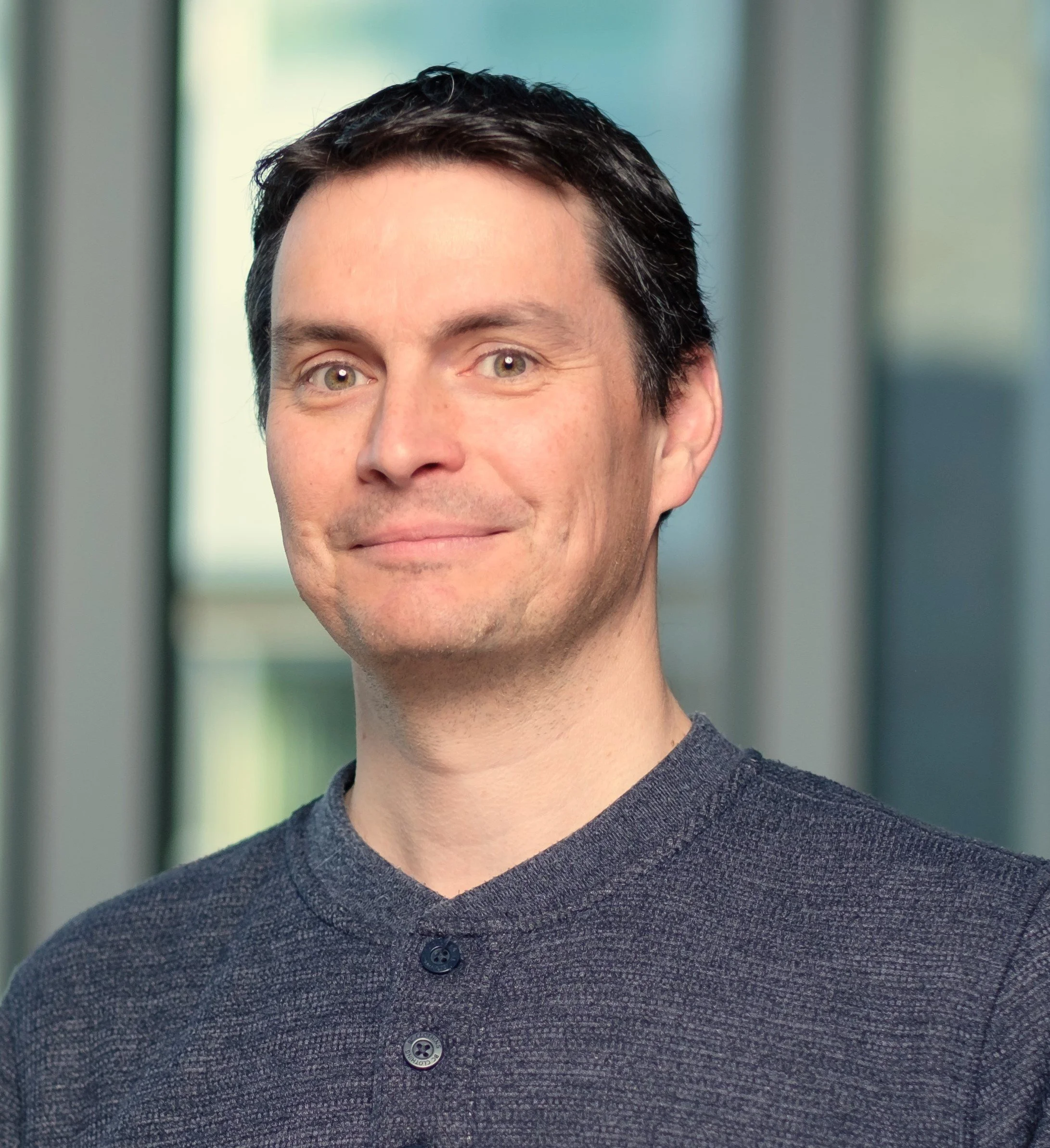


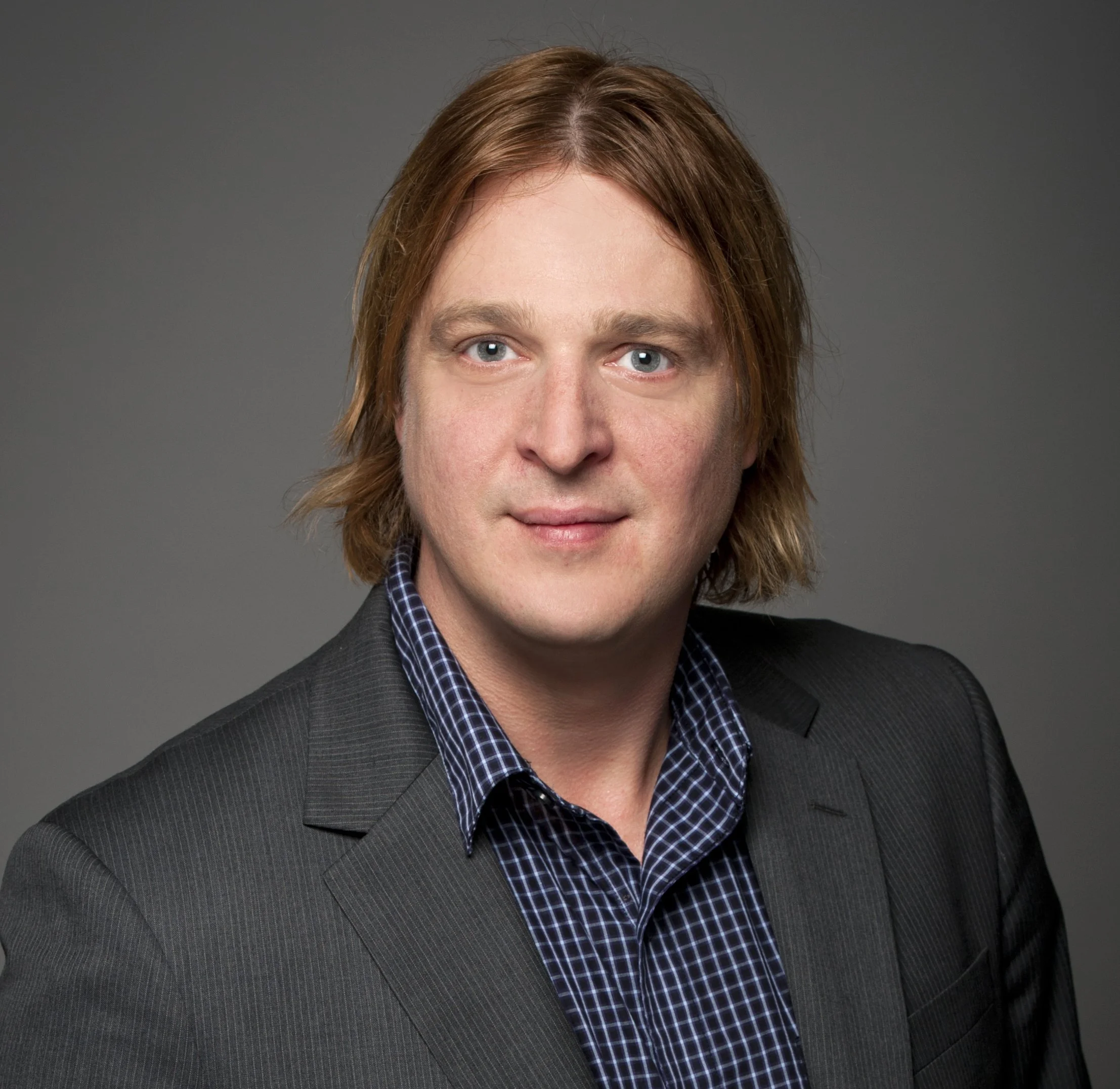

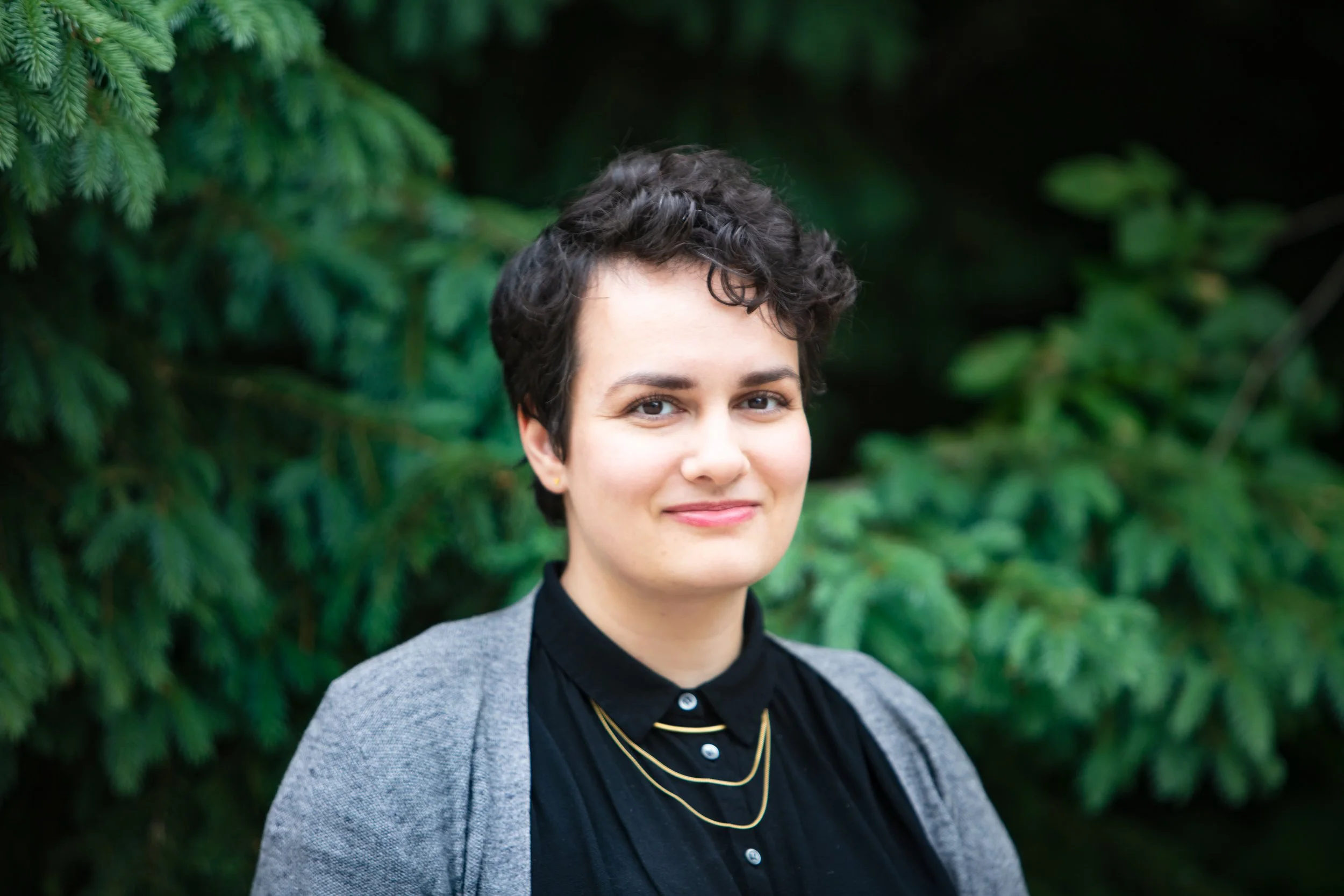
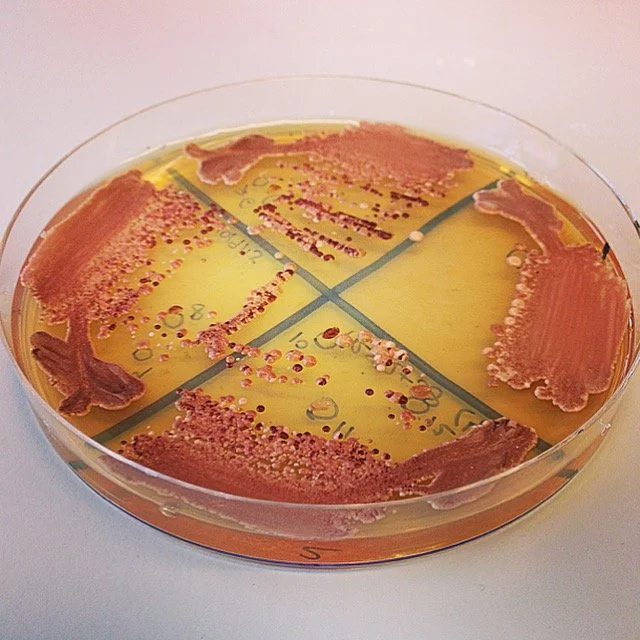
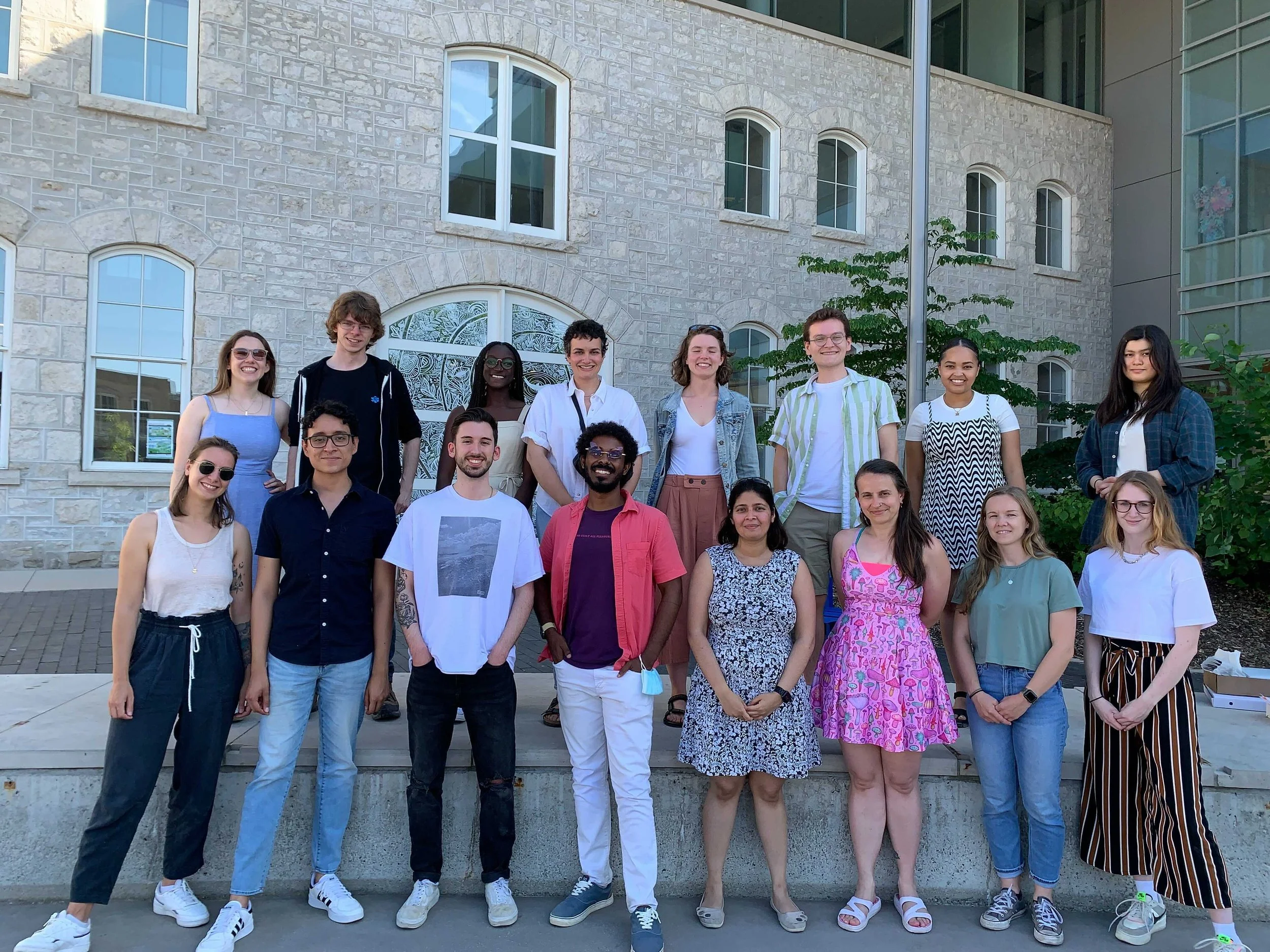

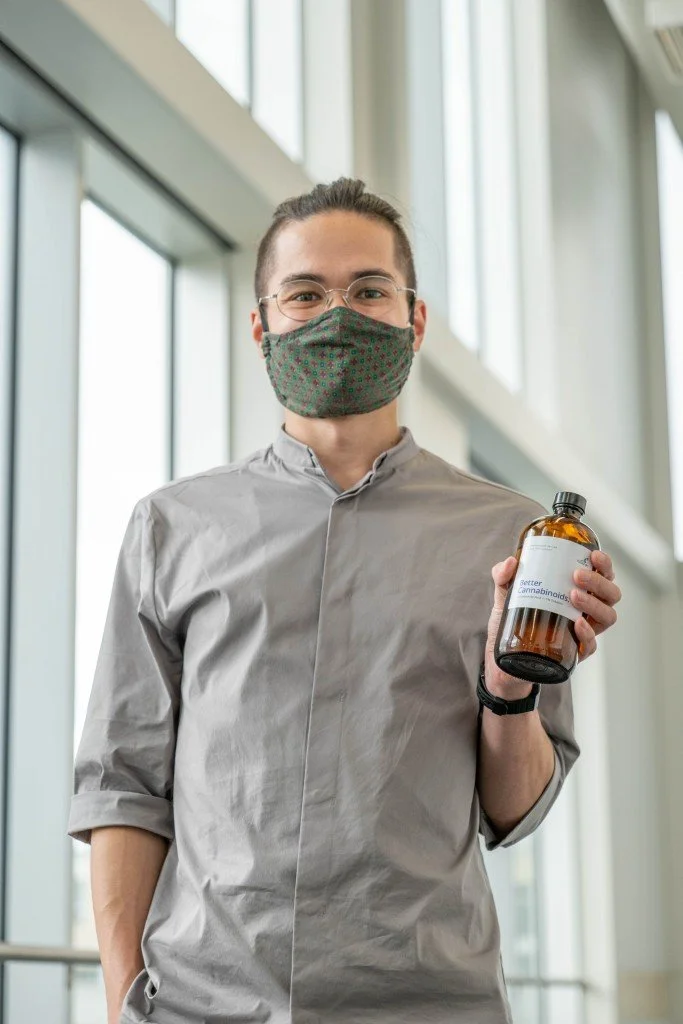





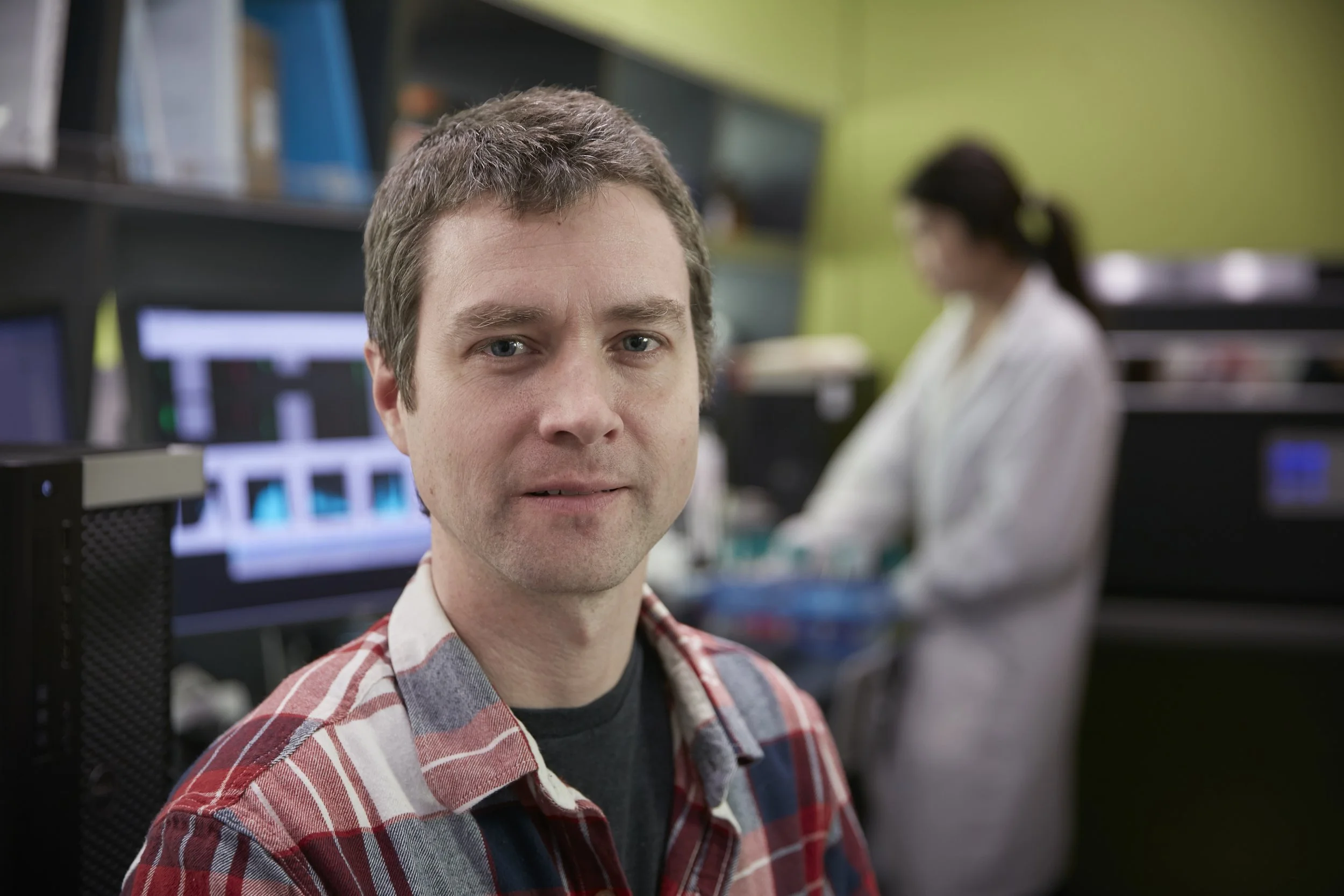











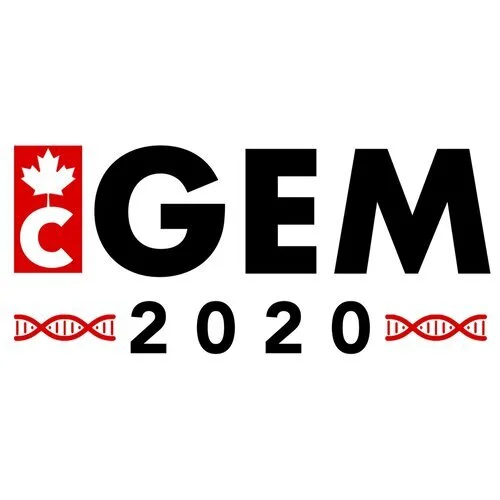
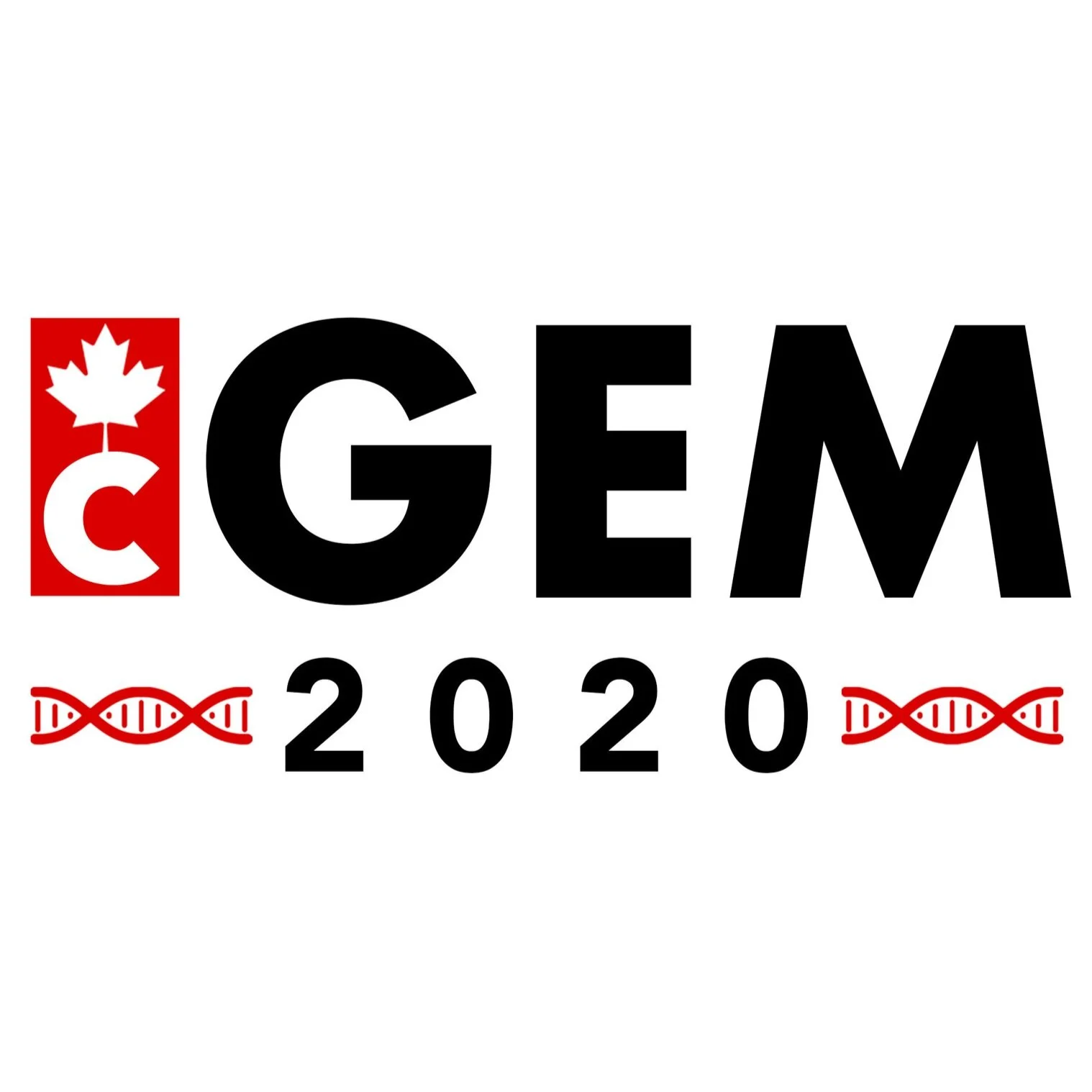




![Figure 1: BioBits™ Bright is a synthetic biology learning kit that provides exposure to molecular biology and engineering techniques at a beginner level of understanding (Reprinted from [Science Advances] Stark et al 2018).](https://images.squarespace-cdn.com/content/v1/5a00c234f14aa176e49e19f4/1582825656386-ONKZOHNAZK3JQQC9L473/F1.large.jpg)
![Using BioBitsTM Bright, the design, build, and test cycle is implemented to create unique designs using varying levels of fluorescence (Reprinted from [Science Advances] Stark et al 2018).](https://images.squarespace-cdn.com/content/v1/5a00c234f14aa176e49e19f4/1582826269406-FVVFGR76BWN95497YYX5/F4.large.jpg)








